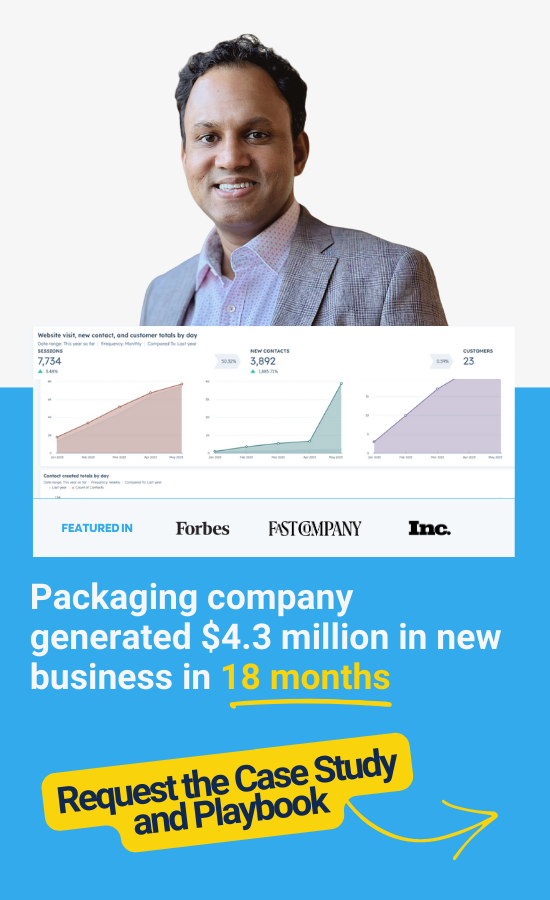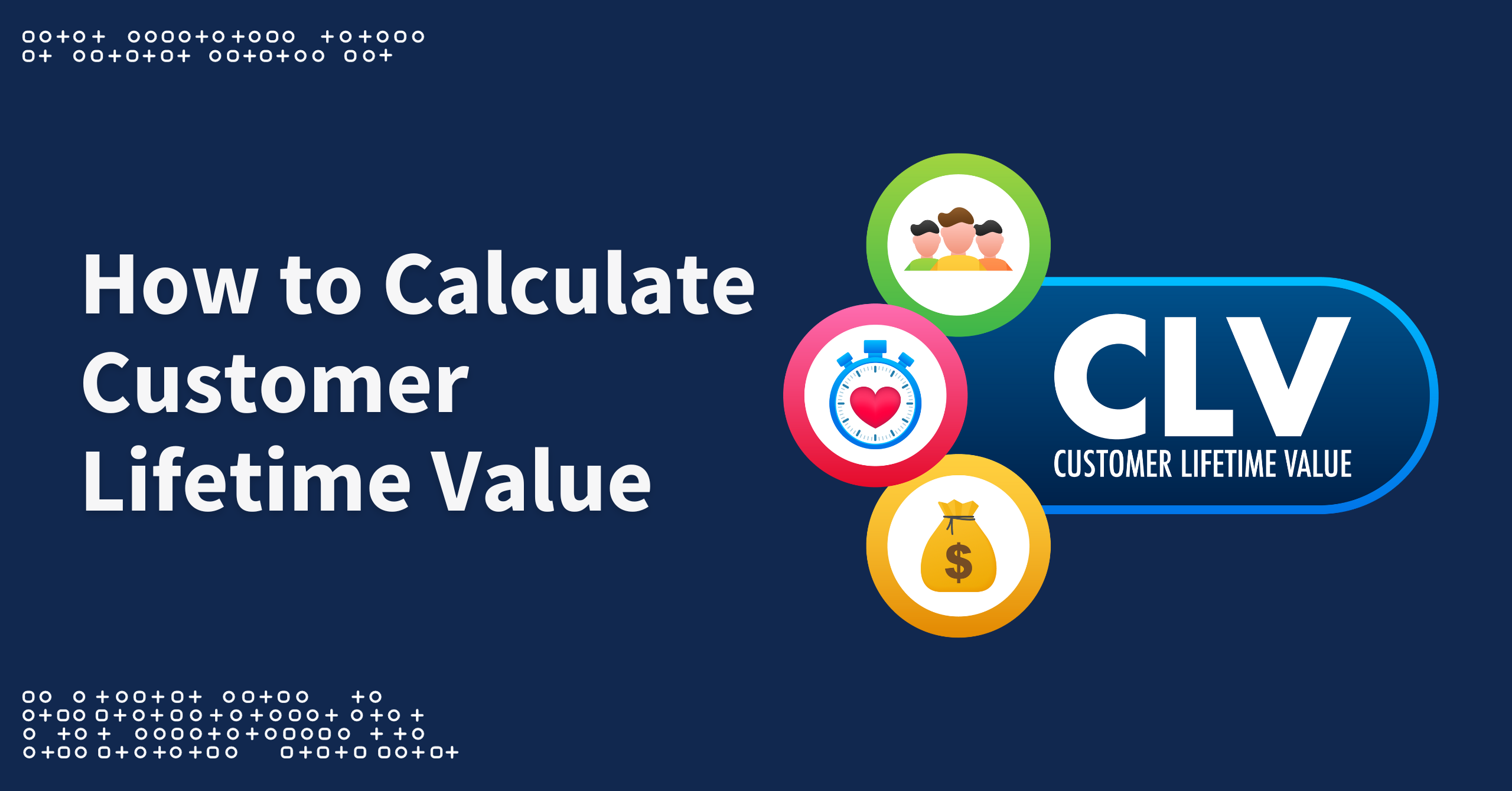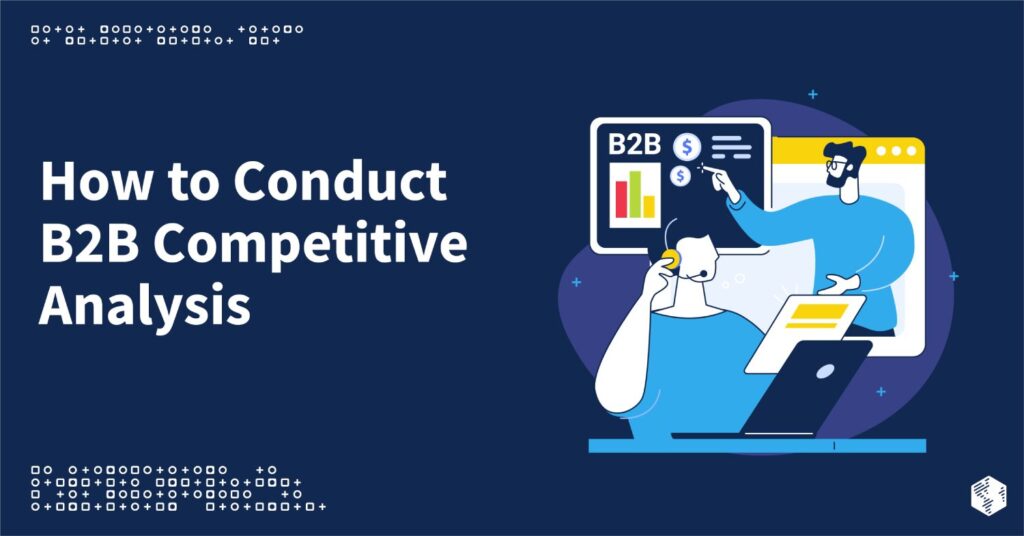We all know our customers are valuable—but have you ever considered how valuable they are to the long-term growth and success of your business-to-business (B2B)?
If you don’t know how much value a customer brings to your bottom line, it’s hard to tell if you’re investing in the buyers that will bring you the most revenue in their lifetime. But by calculating exactly how much revenue individual buyers or customer segments will generate over time, you can tailor your marketing and sales strategies to target the highly valuable customers who will help your business grow.
To estimate how much profit your business can expect to generate from your loyal customers, turn to the B2B customer lifetime value metric.
What Is Customer Lifetime Value (CLV or CLTV)?
Customer lifetime value (CLV or CLTV) is the total revenue a business can expect to receive from an individual customer or segment of buyers throughout the course of the relationship. This valuable metric helps your B2B company understand how profitable particular customers or groups are over time—and how much profit you can actually expect, on average, from your customers.
The longer a buyer continues to purchase your company’s products or services, the more their CLV increases.
Knowing the value of your average customers and identifying your most loyal segments makes it easier for your business to allocate resources and invest in strategies that boost customer retention.
Essential Components of B2B Customer Lifetime Value
Before you can measure CLV for your B2B business, there are a few calculations you have to make first.
Keep in mind that the accuracy of these numbers will directly correlate to the accuracy of your CLV calculation, so be as precise as possible when making estimations—establish a reliable way to track and analyze customer data to help reduce the risk of errors.
Customer Value: Revenue Generated from the Customer
The first number you need for the CLV formula is the customer value (CV). CV is the average revenue generated from the customer or buyer segment. To calculate CV, start by calculating two values: average purchase value (APV) and the average purchase frequency rate (APFR).
Average Purchase Value (APV)
The APV is an estimation of the average amount of revenue a customer generates during a specific time period. Use the following formula to find APV:
Average Purchase Frequency Rate (APFR)
The APFR, also referred to as the average number of purchases, estimates the number of purchases made by unique customers during an allotted time and is calculated as follows:
Customer Value (CV)
When used as part of calculating CV, both APV and APFR must cover averages over the same timeframe.
After you have estimated APV and APFR, you can calculate CV with the following formula:
The CV is the first number required to calculate CLV.
Average Customer Lifespan: Length of Customer Relationship
The second number required for the CLV formula is the customer lifespan, which describes the average length of time a customer continues to purchase your products or services.
To calculate customer lifespan, determine the average number of years a customer stays active with your B2B company and then consider your total number of customers. Use the following formula:
The resulting figure is the average lifespan of a customer’s relationship with your business.
Costs Associated with Customer Acquisition & Retention
While the CLV formula does not factor in the costs to acquire and retain customers, it can be useful in some business situations—such as in budget discussions—to consider these elements in your CLV analysis.
One option is to subtract acquisition and retention costs from CLV. The resulting number will help your business compare how much it costs to acquire and retain a customer versus how much revenue that same customer is expected to generate for the company.
Calculating Customer Lifetime Value for B2B Companies
Now that you have used customer data and analysis tools to estimate CV and average customer lifespan, you can start calculating CLV and use the results to guide your long-term B2B growth strategy.
Customer Lifetime Value Formula
Among B2B companies, the most popular method of finding CLV is with the following easy formula:
The result is a monetary value that represents the revenue you can expect the average customer to generate throughout their entire relationship with your business.
Other Metrics Impacting Customer Lifetime Value
CLV works hand in hand with other metrics to provide a comprehensive look at your business’s ability to generate revenue over time. Consider calculating these metrics as well to support your findings and provide additional data-driven insights.
Average Revenue Per Account (ARPA)
Some B2B companies in various industries, such as SaaS businesses, use the average revenue per account (ARPA) metric instead of CV in the CLV formula. After finding ARPA, you can multiply the result by the average customer lifespan number to find CLV.
Churn Rate
A business’s customer churn rate is the percentage of customers who end their relationship with the company in a certain time period. Since customer lifespan is a significant factor in the CLV calculation, reducing the overall churn rate increases your CLV.
Customer Acquisition Cost (CAC)
Customer acquisition cost (CAC) represents how much it costs, on average, to acquire a new customer. Comparing CAC and CLV will reveal how long it takes for a customer to generate enough revenue for your business that it covers the initial costs of acquiring that customer.
Customer Retention Rate
The customer retention rate indicates the percentage of customers who continue purchasing your products or services over a given time period. It’s a simple calculation—dividing the total number of customers at the end of the timeframe by the number of customers you started with and multiplying that number by 100 to get a percentage. The result reveals how well you retain existing customers, which is as critically important to growth as acquiring new ones.
The Importance of Calculating CLV in B2B Marketing & Sales
CLV is an important metric for any B2B business. Let’s take a closer look at how your organization can use CLV as part of your long-term growth plan.
Make Strategic Decisions
With CLV, you can identify customer loyalty and retention issues, better understand customer behavior, and analyze customer spending patterns. The insights this metric provides can lead to improved data-driven decision-making as well as growth-focused marketing and sales strategies.
Take a Customer-Centric Approach
CLV helps you identify and target your ideal customers—those who bring the most revenue to your business. This metric makes it easier to segment customers based on needs, preferences, profitability, and behavior and then develop customer acquisition and retention strategies via customer-driven marketing designed to specifically target that segment of buyers.
Maximize Long-Term Revenue & Profitability
Over time, higher CLVs will lead to increased revenue. A higher CLV indicates more value that the customer brings during that time frame—in other words, more revenue. Thanks to CLV, your B2B business can target those customers that bring in the most revenue to your company. After you identify your high-value customers, you can create retention, upselling, and cross-selling strategies that cater to that audience.
Strategies B2B Companies Can Use to Enhance CLV
Using these proven strategies, you can increase your business’s average CLV and generate more revenue.
Customer Relationship Management (CRM) Strategies
Customer relationship management (CRM) platforms are designed to help organizations manage and optimize their interactions, communications, and relationships with customers as well as their data. As these systems centralize and organize your customer data, you can leverage them to improve your CLV rates in a variety of ways—from analyzing purchasing behaviors to creating a seamless customer experience.
Personalization & Customized Offerings
Personalization is key to both customer retention and ensuring customers have a positive, engaging experience. B2B buyers are looking for more personalized relationships with companies and are more likely to stay with a company that they feel values them. Create a more personalized experience for your customers by engaging with them on social media, using marketing automation to address their unique pain points, and personalize product and service recommendations to encourage them to spend more money on your business in the long run.
Value-Added Services & Upselling
Provide valuable content, personalized upselling opportunities, and exciting upgrades to existing customers. These strategies keep your current customers engaged and loyal to your business, boosting total revenue as well as CLV.
Customer Retention Initiatives
Higher CLV relies on long-lasting relationships with existing customers. If a customer makes frequent purchases at your company but leaves in just a few months, their lifetime value is still low. Increasing customer loyalty, ensuring a smooth customer experience, and maintaining a high retention rate are essential to enhancing CLV.
Challenges in Determining & Utilizing CLV in B2B Marketing & Sales
The B2B landscape has unique challenges that can make calculating and leveraging CLV difficult.
Complexities in the B2B Sales Cycle
The B2B sales cycle is complex, inconsistent, and constantly changing alongside customer buying patterns. These complexities can complicate the process of calculating APV and APFR. Use CRM platforms, marketing automation systems, and customer data to make accurate estimates in the face of the complicated B2B sales cycle.
Multiple Decision-Makers & Stakeholders
B2B purchases involve multiple decision-makers and stakeholders, all who give input and have opinions—sometimes conflicting—about the purchase. Transforming the idea of an individual “customer” to a company may require adjustments to CLV metric calculations, so look at historical data to maintain consistency across data points.
Data Accuracy & Reliability
Accurate CLV measurements require accurate, reliable data. But limited or inaccurate customer data, short relationships, and conflicting data sources can distort your calculations. To ensure data is accurate, invest in the right tools to collect and organize customer data, create workflows to collect and manage data, and update databases regularly to maintain data integrity.
Conclusion
CLV is an incredibly powerful metric that B2B companies can use to make strategic decisions, target your ideal customers, and maximize revenue—essential components to achieving long-term, sustainable growth. Once you learn how to calculate customer lifetime value, you will know how to identify highly valuable customers and can start focusing your marketing and sales efforts on acquiring (and retaining) these revenue-generating buyers.
Need help acquiring and retaining customers? We’re ready to partner with you.
At OneIMS, we designed the growth formula framework to support your business’s growth goals. By following our proven formula, your business will acquire new buyers, retain existing customers, optimize revenue, and focus on sustainable growth.
Ready to learn more? Let OneIMS be your growth partner. Schedule a consultation with us today to get started.







































